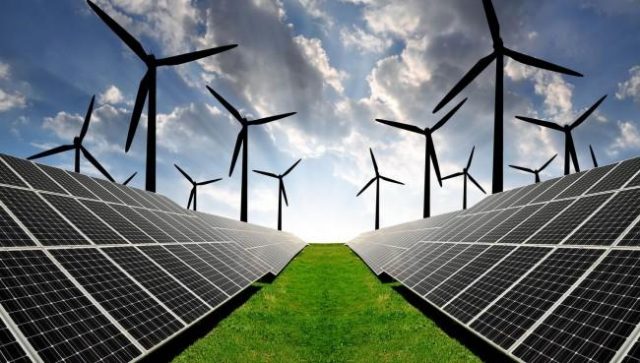Interest in the field of renewable energy sources has been on the rise for the past few years. This is due to the rise in the exploitation of fossil fuels and the growth of high-energy consuming regions across the world. Today, there are many policies aimed at increasing green contributions and reducing the emission of pollutants.
Fulfilling these conditions requires the massive use of solar radiation, water flow, geothermal processes, and wind technologies. However, the unpredictable nature of atmospheric conditions limits the full utilization of these technologies. For effective renewable energy exploitation, there’s a need for the utilization of different energy storage devices.
Some of the common options include the use of accumulators and redox flow batteries. Electrochemical capacitors are also an effective strategy to utilize. This is because it meets environmental requirements and it’s a sustainable and reliable energy source. It also doesn’t produce greenhouse gases or cause pollution during its use.
Overview of Electrochemical Capacitors
The concept of using electrochemical capacitors for energy storage is based on electrostatic interactions between polarized electrodes and ions. This is accompanied by the accumulation of species linked with the carbon material surface. The concept is also called the formation of electric double-layer (EDL).
The growing interest in electrochemical capacitors has led to the introduction of multiple concepts for creating high-performance devices. Also, most of these capacitors are based on carbon materials, particularly activated carbon due to its possibility of modification, price, and disposal.
There are currently different carbonaceous materials with different textural and functional properties. The main components of these capacitors are the electrolyte and the electrode materials. Activated carbon is currently the main electrode material that is used in these capacitors, especially in commercial devices. This electrode is obtained from carbon-containing natural precursors.
Also, interest is currently higher in activated carbons that are made from biomass. This is because its synthesis involves the use of common, renewable resources. They also offer amazing properties like providing simultaneous activation, higher electron density, and pseudocapacitive contributions.
Other Innovative Energy Storage Solutions
Most engineers and scientists now recognize the potential of renewable energy and are now developing innovative energy solutions to further bridge supply gaps, meet growing demands, and harness the potential of having clean power.
These technologies are all channeled towards storing a high amount of energy when generation is at its peak, and releasing this energy when generation drops.
With that said, let us go through some of the amazing energy storage solutions within the renewable energy field.
Compressed Air Energy Storage (CAES)
These systems are designed to store a large amount of energy, and they work by compressing air and storing it in tanks or caverns underground. The compressed air is then released when there is a high energy demand, after which it is expanded for the generation of electricity. This storage system offers multiple benefits, especially considering that it combines the storage of energy with other solutions. Examples of these solutions include the ability to store carbon dioxide emissions and excess heat utilization.
Also, the scalability of these systems enhances large-scale applications This also makes them an ideal option for highly renewable energy generation. Another thing to note is that CAES offers the ability to simultaneously reduce waste and carbon emissions while integrating with renewable energy sources.
Pumped Hydro Storage
This is one of the most established and oldest available forms of energy storage. It works with the aid of water and gravity. Basically, the excess energy is used in pumping water to reservoirs uphill when energy generation is at its peak. The stored water is then released downhill to turn electrical turbines and generate electricity.
One of the benefits of this is its long lifespan, which allows for applications for many years. Also, the efficiency level of this energy storage solution is up to 80%, which makes it one of the most energy technologies available.
Lithium-ion Batteries
These batteries are now a common electronic component on most devices today. They play a vital role in the energy storage sector because of their fast response time, high energy density, and long lifespan. With lithium-ion batteries, you can store energy when generation periods are high and supply the stored energy when generation periods drop to ensure a continuous supply of power. Because of the benefits they offer, most manufacturers and researchers are now working towards making these batteries more environmentally friendly and affordable.
Renewable Energy Storage Challenges
Wind power and solar and the most commonly used renewable energy sources because they provide a clean substitute to fossil fuels. However, the are intermittent, and this is one of the main challenges the renewable energy industry is faced with.
As the wind dies down or when the sun sets, the generation of energy using these sources reduces, and this causes fluctuations in power grids. This introduces inefficiencies and causes disruption in the supply of power to industries and homes.
Another challenge is the integration of sustainable energy sources to electrical grid, which is usually a complex process to achieve. The intermittency in the availability of these energy sources makes it difficult to achieve the grid stability needed to meet the growing energy demands. Despite these challenges, it’s worth noting that there are recent breakthroughs like eco-friendly capacitors and battery technologies that help in solving these challenges.
Wrapping Up
The need to harness renewable energy storage cannot be overemphasized, especially for combating the challenge of the fluctuating energy supply associated with renewable energy sources. However, the key thing to note is that with a consistent and stable power supply, these solutions offer multiple benefits.
Among these benefits are reduced carbon emissions, increased renewable penetration, enhanced grid stability, increased renewable penetration, and economic opportunities. With the world currently moving towards achieving a sustainable future, innovative energy storage solutions have a vital role to play when it comes to maximizing renewable energy sources.
Do check:
- Microsoft Office 2021 Product Key Free
- Windows 10 Product Keys
- Free Microsoft Visio Professional 2021 Product Key
- Microsoft Office 2003 Product Key
- Extratorrent Proxy 2024
With continuous research and development efforts, the technologies will advance at a faster pace, and this will bring us closer to achieving a resilient and reliable energy storage system. Ultimately, it will further help in combating the environmental impacts of other energy storage options.
Follow Technoroll for more!
Editorial Staff of the TechnoRoll, are a bunch of Tech Writers, who are writing on the trending topics related to technology news and gadgets reviews.




